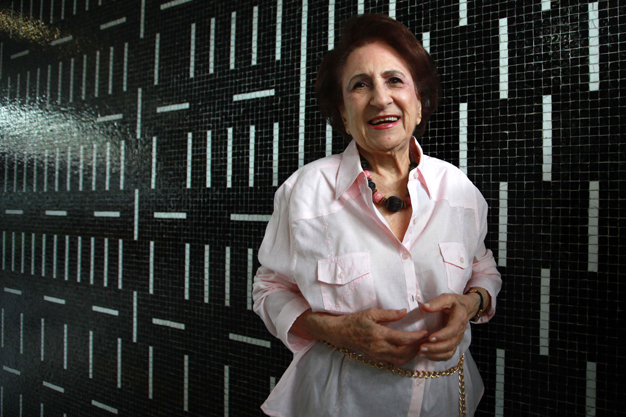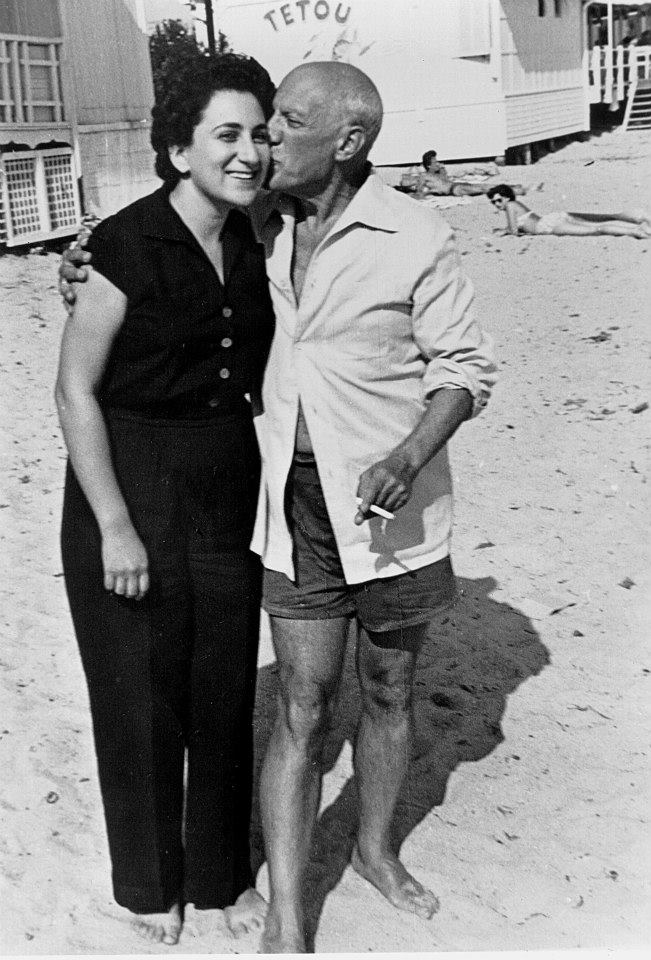The Light That Margot Benacerraf Harnessed Shines Across Time
One of Venezuela’s most brilliant creators died this week at 97. Let’s pay homage to her brief but unforgettable films and her legacy as a cultural manager


There’s a moment in the 1959 film Araya that resonates deeply in my mind. In it, an elderly lady and her granddaughter walk through the desert to place seashells on a grave. Flowers can’t grow in such an arid environment, yet the inhabitants of the peninsula did their best to live a life with dignity. It’s a perfect encapsulation of the themes of what is arguably one of the best films made in Venezuela. The artist responsible for it, Margot Benacerraf, died yesterday at age 97, and with her passing, Venezuelan cinema has lost one of its titans.
Born in Caracas in 1926, Benacerraf was part of the first graduating class of Philosophy and Letters at the Universidad Central de Venezuela in 1947. She was an acclaimed writer, but her journey into the world of cinema didn’t start until 1949. After a theater script she wrote titled Cresciente earned her a scholarship to study in Columbia, she developed a profound passion for movies. This dedication only grew as she furthered her studies in France at the Institute of Advanced Film Studies (IDHEC), where she specialized in film direction between 1950 and 1952.
It’s hard to categorize Benacerraf’s style of filmmaking. To start, there are only two entries in her filmography. Yet, both of them lie on the border between reality and fiction and behave more like “visual poems”: grounded in reality but unafraid to view it through a lens of beauty. Her first documentary, Reverón, from 1952, is a half-hour exploration of the renowned Venezuelan artist Armando Reverón. It covers a day in the life of the complex artist and places a profound emphasis on his creative process and the natural world surrounding his home, El Castillete. Reverón himself was heavily involved, and according to Benacerraf, in a moment that didn’t make it to the final cut, he made her wear a cloak and “forgive” his signature dolls. Reverón was celebrated internationally and was even featured in the 1953 Cannes Film Festival.

However, the film that solidified Benacerraf’s name in the history books is Araya. It also premiered at Cannes and was even nominated for the festival’s highest award, the Palme d’Or. Although it did not win, it received, in conjunction with Alain Resnais’s classic Hiroshima mon amour, the International Film Critics Award and the Higher Technical Commission Award, which are still quite prestigious. Moreover, considering the historical context, where there was no national organization promoting cinema production and Venezuela was immersed in the transition from the Pérez Jiménez dictatorship, the feat becomes even more impressive.
Araya follows the life of three families that live and work in the eponymous salt mines in Sucre state. Benacerraf originally intended to create a three-part anthology called “Tríptico de Navidad,” featuring a story from the Andes, one from the plains, and one from the coast. Yet, when she saw a picture of the salt pyramids of Araya in a magazine, she was fascinated, and the project slowly morphed into what we know today. The film pays a lot of attention to the traditional processes surrounding fishing and salt mining and features a gorgeous approach to photography that holds both the beauty and despair of the region in tension. Despite being grounded in reality, it’s not a documentary. Instead, Benacerraf was inspired by Italian neorealism and constructed a fictional story portrayed by the real inhabitants of Araya. In fact, in an interview with Pablo Gamba, she explained that the elderly lady and her granddaughter previously mentioned were not even related and that the two lovers walking while holding hands actually despised each other.
This narrative detachment from reality helps the audience to further empathize with some of the hardships and difficult conditions the inhabitants of the region endure. What makes it stand out, however, is that it’s always approached with dignity. In that interview, Benacerraf further stated: “There is never a complaint in Araya because those people had, and it is what impressed me the most along with the castle, dignity. All the adverse elements you see in the movie they turned around.”

Benacerraf also worked on a film about Picasso, where she was able to work closely with the artist. However, the film was never completed and the files were lost . She also tried to make an adaptation of the Gabriel García Márquez short story “The Incredible and Sad Tale of Innocent Eréndira and her Heartless Grandmother,” but the author ended up giving the rights to Mexican director Ruy Guerra.
Nevertheless, despite her short filmography, Benacerraf was instrumental in the development of cinema in Venezuela. She founded the Cinemateca Nacional in 1966 and directed it for three consecutive years. This organization focused on promoting international cinema and archiving Venezuelan productions. In that same year, she led efforts to create the Plan Piloto Amazonas, which used mobile river units to promote culture in remote locations. Benacerraf also led Fundavisual Latina, a project created by Gabriel García Márquez that aimed to promote Latin American cinema and television. Moreover, in 2013, she created the Margot Benacerraf Audiovisual Foundation, which established video libraries in the Escuela de Artes and the UCV.Araya ends with the arrival of machinery, which streamlines the production process and upends the life of the inhabitants of the peninsula. Rather than a statement, it ends with an unanswered question full of promise. As our country continues to navigate uncertain social and political waters, it’s important to hold our cultural landmarks close and to use them to process our surroundings. With Benacerraf’s work, we find that, in the midst of hardship and difficulty, beauty finds a way, and that’s something that we all must remember.
Caracas Chronicles is 100% reader-supported.
We’ve been able to hang on for 22 years in one of the craziest media landscapes in the world. We’ve seen different media outlets in Venezuela (and abroad) closing shop, something we’re looking to avoid at all costs. Your collaboration goes a long way in helping us weather the storm.
Donate




